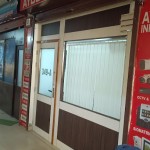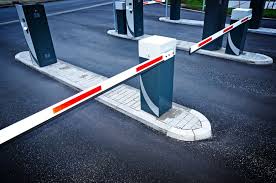Introduction:
In the world of modern security and traffic management, boom barriers stand tall as essential tools, serving a myriad of purposes across various sectors. From controlling vehicular access to ensuring safety and security, these robust barriers have found their way into numerous applications, offering reliability and efficiency. Let's delve into the common applications of boom barriers and understand their significance in different domains.
1. Traffic Management:
One of the most prevalent applications of boom barriers is in traffic management systems. Whether it's a busy intersection, a toll booth, or a parking facility, boom barriers play a crucial role in regulating the flow of vehicles. By strategically deploying boom barriers, authorities can control access, manage queues, and maintain order on the roads, thus enhancing overall traffic efficiency and safety.
2. Parking Facilities:
In both commercial and residential settings, parking management is a constant challenge. Boom barriers provide a convenient solution by restricting unauthorized entry and ensuring only authorized vehicles gain access to parking areas. Integrated with ticketing systems or access control mechanisms, these barriers streamline the process of parking, contributing to a hassle-free experience for both facility owners and users.
3. Security Checkpoints:
Security is paramount in sensitive areas such as government installations, industrial facilities, and high-security zones. Boom barriers act as the first line of defense by controlling vehicular access to these premises. Equipped with advanced features like RFID readers, biometric scanners, or license plate recognition systems, boom barriers can accurately identify and authorize vehicles, strengthening the security infrastructure of the premises.
4. Toll Booths:
At toll plazas and expressways, boom barriers automate the process of toll collection, facilitating smooth passage for vehicles while ensuring revenue collection for authorities. Integrated with electronic toll collection (ETC) systems, these barriers enable seamless transactions, reducing congestion and enhancing the overall efficiency of toll operations.
5. Railway Crossings:
Railway crossings are critical points where vehicular and pedestrian traffic intersect with railway tracks. Boom barriers equipped with sensors and warning signals play a vital role in ensuring safety at these crossings. By automatically lowering the barriers when trains approach, they prevent accidents and safeguard lives, making railway crossings safer for everyone.
6. Event Management:
During large-scale events such as concerts, sports matches, or festivals, managing vehicular access and crowd control is a logistical challenge. Boom barriers help event organizers maintain order by delineating entry and exit points, managing traffic flow, and restricting unauthorized vehicles from entering restricted areas. This ensures the safety and security of attendees while facilitating smooth event operations.
Conclusion:
Boom barriers have evolved from simple mechanical barriers to sophisticated security and traffic management solutions, finding applications across a diverse range of sectors. Whether it's ensuring safety on the roads, controlling access to restricted areas, or streamlining parking operations, these versatile barriers continue to play a pivotal role in enhancing efficiency, security, and convenience in our modern world. As technology advances, we can expect boom barriers to become even more integrated and intelligent, further optimizing their performance in various applications.






Comments